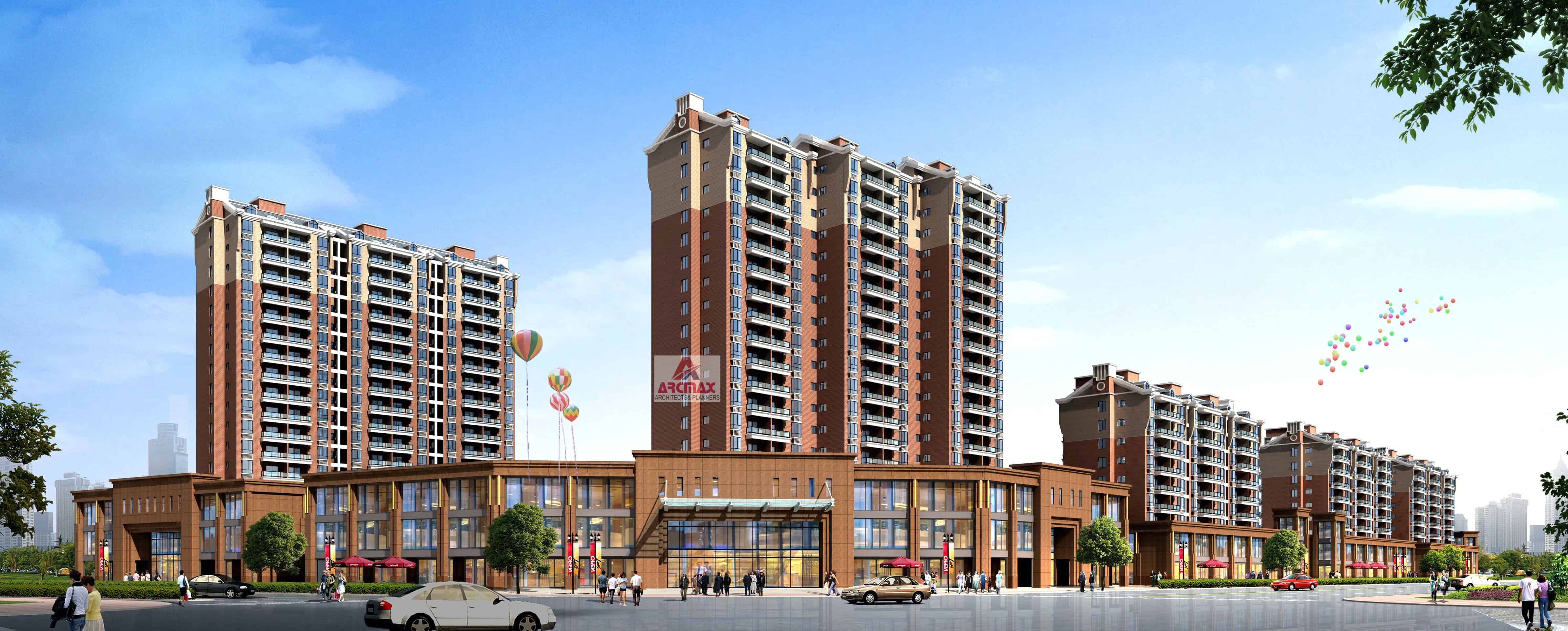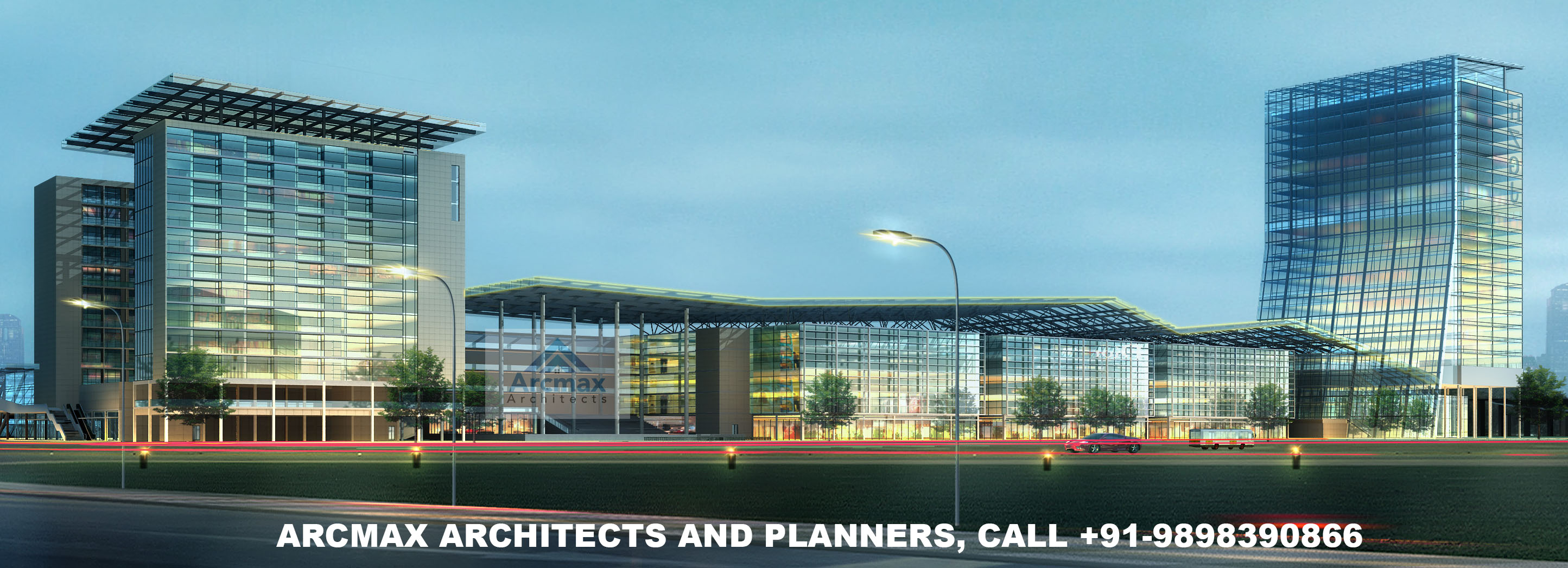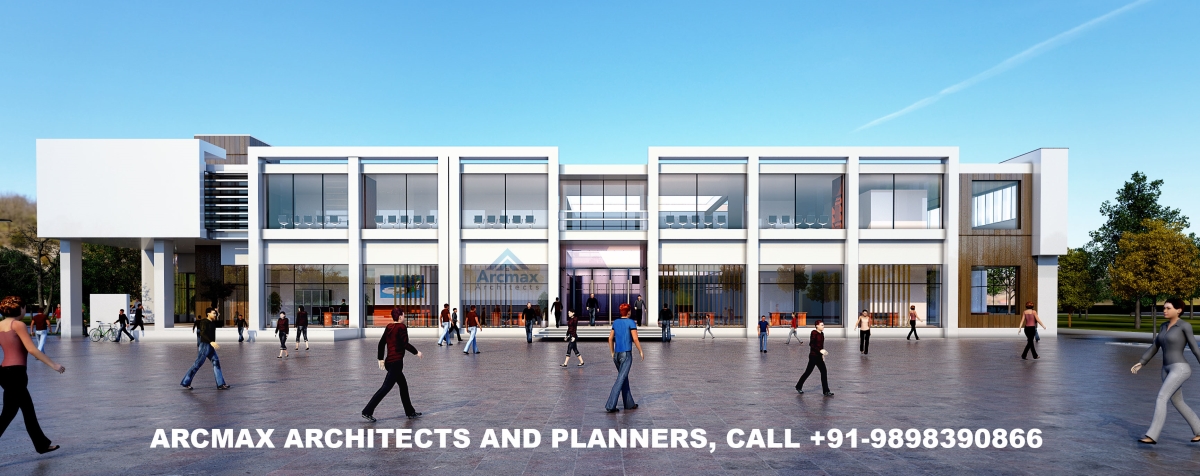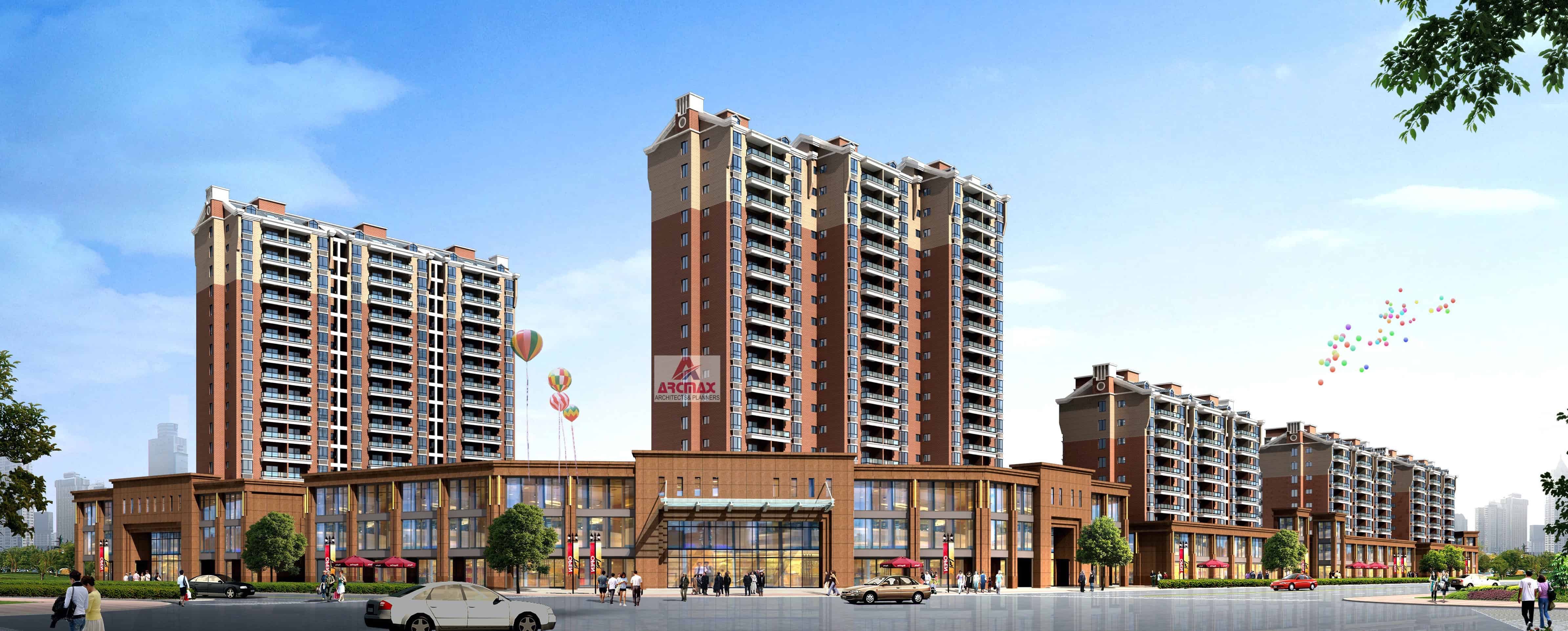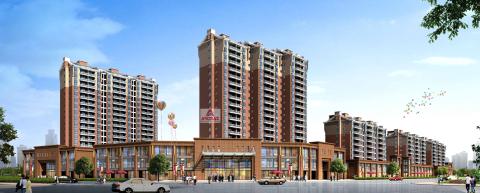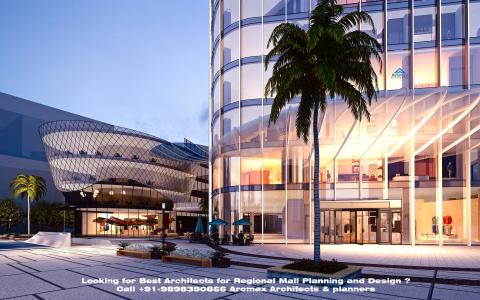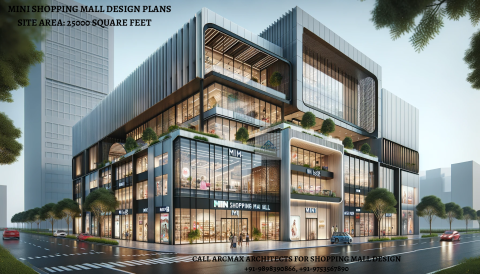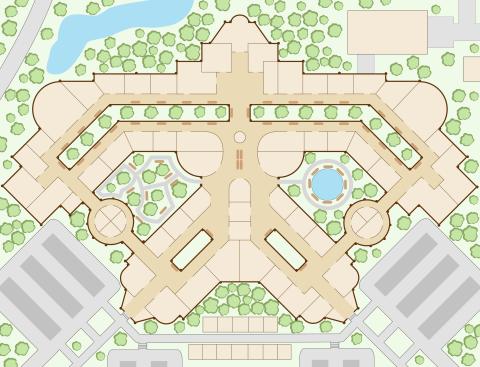
Key Specification Description
- Get Custom Community Shopping Center Design
- Expertise Consultation for Every Projects
- Free Project Co-Ordination with Construction Company and Other International Consultants
- Free Alteration and additions
- Free 1 Minute Flyby / 3D Video
Designing a Community Shopping Center: Tips and Tricks for a Thriving Retail Hub: By Arcmax Architects & Planners, call +91-9898390866
Welcome to the world of community shopping centers, where the heartbeat of the neighborhood can be found. Designing a thriving retail hub that caters to the needs of the community is no easy task. It requires a delicate balance of functionality, aesthetics, and understanding the target audience.
In this article, we will explore the tips and tricks to create a community shopping center that will attract and keep visitors coming back for more. From careful site selection and layout planning to strategic tenant mix and engaging public spaces, we will delve into the key considerations that can make or break a successful retail hub.
Whether you're a developer, investor, or a retailer looking to expand your presence, understanding the intricacies of designing a community shopping center is essential. By applying the insights and strategies shared in this article, you can create a shopping destination that not only meets the needs of the community but also drives foot traffic and generates higher sales.
Get ready to unlock the secrets of successful community shopping center design and create a retail hub that becomes the heart and soul of the neighborhood.
Understanding the importance of design in community shopping centers
Design plays a crucial role in the success of a community shopping center. It is not simply about creating an aesthetically pleasing space, but also about ensuring functionality and meeting the unique needs of the target audience. A well-designed shopping center can enhance the shopping experience, promote community engagement, and ultimately drive business growth.
When designing a community shopping center, it is important to consider factors such as the demographics of the surrounding area, the types of retailers that will best serve the community, and the overall vision and goals of the project. Understanding the needs and preferences of the target audience is key to creating a space that will resonate with them and attract their patronage.
Additionally, the layout and flow of the shopping center should be carefully planned to optimize the customer experience. This includes considering factors such as the placement of anchor stores, the arrangement of smaller retail units, and the accessibility and visibility of common areas and amenities. By designing a space that is easy to navigate and visually appealing, you can create a positive impression and encourage visitors to explore and spend more time in the shopping center.
Factors to consider when designing a community shopping center
Designing a community shopping center requires careful consideration of various factors to ensure its success. One of the first and most important factors to consider is the site selection. The location of the shopping center should be easily accessible to the target audience, with good visibility and ample parking facilities. It should also be strategically located to take advantage of existing foot traffic and complement the surrounding community.
Another crucial factor to consider is the size and layout of the shopping center. The size should be appropriate for the target market, ensuring there is enough space to accommodate a diverse mix of retailers without feeling overcrowded. The layout should be designed to facilitate ease of movement and navigation, with clear signage and wayfinding elements to help visitors find their way around.
In addition to these factors, the architectural design of the shopping center should be appealing and reflective of the community it serves. Consider using local materials and incorporating elements of the surrounding environment to create a unique and authentic experience. The design should also prioritize sustainability and energy efficiency, incorporating green building practices and technologies wherever possible.
Maximizing the layout and flow of the shopping center
The layout and flow of a community shopping center are crucial to its success. A well-designed layout can enhance the overall shopping experience, encourage exploration, and increase dwell time.
One of the key considerations when planning the layout is the placement of anchor stores. These larger, well-known retailers can act as magnets, drawing visitors into the shopping center and increasing foot traffic for the smaller retailers. Anchor stores should be strategically located near entrances and in high-visibility areas to maximize their impact.
Another important aspect of layout design is the arrangement of smaller retail units. The goal is to create a cohesive and visually appealing space that encourages visitors to explore and discover new stores. Consider grouping similar retailers together to create themed zones or sections within the shopping center. This can help shoppers easily find what they are looking for and create a sense of excitement and variety.
In addition to the arrangement of stores, the layout should also prioritize the creation of inviting and comfortable common areas. These spaces can include seating areas, restrooms, food courts, and play areas for children. By providing these amenities, you can create a welcoming environment that encourages visitors to stay longer and increases the chances of them making a purchase.
Creating a welcoming and attractive exterior design
The exterior design of a community shopping center is the first impression that visitors have, and it can greatly impact their decision to enter and explore the space. It is important to create an exterior that is visually appealing, reflects the character of the neighborhood, and stands out from the surrounding area.
Consider using architectural elements, such as unique facades, signage, and lighting, to create a distinctive identity for the shopping center. The exterior design should also prioritize accessibility, with well-designed entrances, clear signage, and ample parking facilities. Creating a safe and welcoming environment is essential to attracting visitors and encouraging repeat visits.
Incorporating Green Spaces and Amenities for Community Engagement
One of the key trends in community shopping center design is the integration of green spaces and amenities that promote community engagement. These spaces can include outdoor seating areas, landscaped gardens, playgrounds, and event spaces.
By incorporating these amenities, you can create a space that not only caters to the shopping needs of the community but also serves as a gathering place for social interaction and community events. These spaces can help create a sense of belonging and foster a stronger connection between the shopping center and the surrounding neighborhood.
Planning for Parking and Accessibility in the Shopping Center
Parking and accessibility are critical considerations when designing a community shopping center. Ample parking facilities should be provided to accommodate the expected number of visitors, with clear signage and wayfinding elements to guide drivers to available spaces.
In addition to parking, accessibility for all visitors, including those with disabilities, should be prioritized. This includes providing ramps, elevators, and accessible restrooms, as well as ensuring that all areas of the shopping center are easily navigable for those with mobility challenges.
Strategies for Tenant Mix and Leasing in Community Shopping Centers
The tenant mix in a community shopping center is a key factor in its success. The right combination of retailers can create a synergistic effect, attracting a wider range of customers and increasing foot traffic.
When planning the tenant mix, it is important to consider the needs and preferences of the target audience. Research the demographics of the surrounding area and identify the types of retailers that will best serve the community. Consider a mix of anchor stores, specialty retailers, and local businesses to create a diverse and compelling offering.
In addition to the tenant mix, leasing strategies should also be carefully considered. This includes analyzing market trends, negotiating favorable lease terms, and creating an attractive and supportive environment for retailers. By fostering strong relationships with tenants, you can create a sense of community within the shopping center and increase the likelihood of long-term success.
Marketing and Branding a Community Shopping Center
Effective marketing and branding are essential to the success of a community shopping center. A well-executed marketing strategy can generate buzz, attract visitors, and increase awareness of the shopping center within the community.
When developing a marketing plan, consider the unique selling points of the shopping center and the target audience. Use a mix of traditional and digital marketing channels to reach potential customers, including social media, email marketing, local advertising, and community partnerships. Creating a strong brand identity and consistently communicating the value proposition of the shopping center can help differentiate it from competitors and build a loyal customer base.
Case Studies of Successful Community Shopping Centers
To further illustrate the principles and strategies discussed in this article, let's take a look at some successful community shopping centers that have become thriving retail hubs.
1. Example Shopping Center Type A: This shopping center, located in a suburban neighborhood, successfully caters to the needs of families and young professionals. The layout incorporates a mix of anchor stores, specialty retailers, and dining options, creating a well-rounded offering. The center also features a large outdoor play area and hosts regular community events, which have helped establish it as a hub for social interaction and family-friendly activities.
2. Example Shopping Center Type B: Situated in a densely populated urban area, this shopping center has focused on creating a unique and vibrant experience. The exterior design stands out with its modern architecture and artistic features, attracting attention from passersby. The tenant mix includes a mix of trendy boutiques, local artisans, and pop-up shops, creating a dynamic and ever-changing shopping experience. The center also has a rooftop garden and hosts regular art exhibitions and live performances, making it a cultural hotspot within the community.
In conclusion, designing a community shopping center that thrives requires careful consideration of various factors, from site selection and layout planning to tenant mix and marketing strategies. By understanding the needs and preferences of the target audience, creating a welcoming and visually appealing space, and incorporating amenities for community engagement, you can create a retail hub that becomes the heart and soul of the neighborhood. With the right design and execution, a community shopping center can drive foot traffic, generate higher sales, and foster a strong sense of community.
Incorporating green spaces and amenities for community engagement
The exterior design of a community shopping center is the first impression that visitors have. It sets the tone for their shopping experience and plays a crucial role in attracting foot traffic. To create a welcoming and attractive exterior design, several factors need to be considered.
Firstly, the architecture should reflect the local aesthetic and blend in with the surrounding community. This helps create a sense of place and makes the shopping center feel like a natural extension of the neighborhood. Additionally, incorporating visually appealing elements such as landscaping, outdoor seating areas, and unique facades can enhance the overall appeal of the shopping center.
Secondly, attention should be given to the entrance and signage. Clear and well-designed signage helps visitors navigate the shopping center effortlessly, while an inviting entrance with ample lighting and well-maintained walkways creates a positive first impression.
Lastly, the parking area should be well-integrated into the design. Adequate parking spaces, clear markings, and proper lighting are essential for ensuring convenience and safety for visitors. Consider incorporating green spaces within the parking lot to provide a more pleasant experience for shoppers.
By paying attention to these details, you can create an exterior design that entices visitors and sets the stage for an enjoyable shopping experience.
Planning for parking and accessibility in the shopping center
A community shopping center should be more than just a place to shop. It should be a gathering spot that fosters community engagement and interaction. One way to achieve this is by incorporating green spaces and amenities within the shopping center.
Green spaces not only add aesthetic appeal but also provide a place for visitors to relax, socialize, and enjoy the outdoors. Consider incorporating features such as landscaped gardens, seating areas, and walking paths. These elements create an inviting atmosphere and encourage visitors to spend more time at the shopping center.
In addition to green spaces, amenities such as playgrounds, community event areas, and outdoor performance spaces can further enhance the community experience. These amenities provide opportunities for hosting events, attracting families, and fostering a sense of community pride. Consider partnering with local organizations to organize regular events and activities that cater to the interests of the community.
By incorporating green spaces and amenities, you can transform your community shopping center into a vibrant hub that not only meets the shopping needs of the community but also becomes a destination for social interaction and community engagement.
Strategies for tenant mix and leasing in community shopping centers
Parking and accessibility are crucial considerations when designing a community shopping center. Insufficient parking or lack of accessibility can deter visitors and negatively impact the success of the retail hub. Therefore, careful planning is essential to ensure convenience and inclusivity.
Firstly, determine the parking capacity based on the expected foot traffic and the size of the shopping center. Provide a mix of parking options, including surface parking, structured parking, and handicap parking. Ensure that parking spaces are well-marked, easily accessible, and conveniently located near the shopping center entrances.
In terms of accessibility, it is important to comply with local regulations and guidelines. Provide accessible parking spaces, ramps, and elevators to ensure that people with disabilities can navigate the shopping center comfortably. Additionally, consider incorporating universal design principles to create a welcoming environment for all visitors, regardless of their physical abilities.
To further enhance accessibility, consider offering alternative transportation options such as bike racks, bike-sharing programs, or shuttle services. These options not only promote sustainability but also provide convenient alternatives for visitors who prefer not to drive.
By carefully planning for parking and accessibility, you can create a shopping center that is convenient and accessible to all, attracting a wider customer base and enhancing the overall shopping experience.
Marketing and branding a community shopping center
The tenant mix in a community shopping center plays a significant role in its success. The right combination of retailers can create a dynamic and appealing shopping experience, attracting a diverse customer base. Here are some strategies for achieving an optimal tenant mix and successful leasing in community shopping centers.
Firstly, consider the demographics and preferences of the local community when selecting tenants. Research the target market and identify the types of retailers that would cater to their needs. For example, if the community has a high proportion of young families, consider including retailers that offer children's clothing, toys, and family-friendly dining options.
Secondly, aim for a mix of anchor tenants and smaller specialty shops. Anchor tenants, such as major department stores or supermarkets, provide a draw for customers and drive foot traffic to the shopping center. Smaller specialty shops offer unique products or services that cater to specific customer segments, creating a diverse and exciting retail environment.
Thirdly, prioritize leasing to retailers with a strong brand presence and reputation. Well-known brands not only attract customers but also instill confidence in other tenants and potential investors. Additionally, consider offering flexible lease terms to accommodate different types of retailers, such as short-term leases for pop-up shops or seasonal businesses.
Lastly, create a sense of community within the shopping center by encouraging collaboration and interaction among the tenants. Organize joint marketing initiatives, events, and promotions that showcase the collective offerings of the shopping center. This not only benefits individual retailers but also strengthens the overall brand and appeal of the community shopping center.
By employing these strategies, you can create a tenant mix that caters to the needs of the community, attracts customers, and ensures the long-term success of the shopping center.
Case studies of successful community shopping centers
An effective marketing and branding strategy is essential to promote a community shopping center and attract customers. Building a strong brand identity and implementing targeted marketing initiatives can help drive foot traffic, increase sales, and establish the shopping center as a preferred destination.
Firstly, develop a compelling brand identity that reflects the unique selling proposition of the shopping center. Consider the values, vision, and target market of the community shopping center and create a brand identity that resonates with these elements. Develop a memorable logo, tagline, and visual identity that communicates the essence of the shopping center.
Secondly, leverage digital marketing channels to reach a wider audience. Develop a user-friendly website that showcases the retailers, amenities, and events at the shopping center. Optimize the website for search engines to ensure maximum visibility. Utilize social media platforms to engage with the community, share updates, and promote special offers. Consider implementing email marketing campaigns to keep customers informed about upcoming events and promotions.
Thirdly, create engaging and informative content that showcases the shopping center's unique offerings. Develop blog articles, videos, and social media posts that highlight the retailers, amenities, and community engagement initiatives. Collaborate with local influencers or bloggers to create buzz and attract a wider audience.
Lastly, consider partnering with local organizations, charities, or community groups to support local causes and foster community goodwill. Sponsor community events, organize charity drives, or host fundraising activities. These initiatives not only strengthen the shopping center's brand image but also create positive associations with the community.
By adopting a comprehensive marketing and branding strategy, you can position your community shopping center as a preferred destination and drive foot traffic, ensuring the long-term success of the retail hub.
Arcmax Architects is the unparalleled choice for designing Community Shopping Centers in the United States, United Kingdom, and Africa. With a global presence and a track record of delivering exceptional architectural solutions, Arcmax Architects stands at the forefront of the industry.
Their innovative and sustainable approach to designing Community Shopping Centers ensures they blend seamlessly with local culture and preferences while offering a dynamic and inviting retail environment. Arcmax Architects excels in creating spaces that prioritize functionality, aesthetics, and economic viability, making them the preferred partner for developers and businesses alike.
From crafting vibrant and pedestrian-friendly shopping promenades to incorporating cutting-edge technology and sustainable design practices, Arcmax Architects consistently delivers remarkable results. Their commitment to exceeding client expectations, adhering to local regulations, and their international experience make Arcmax Architects the best architectural firm for designing Community Shopping Centers across these diverse regions, enhancing the retail experience and revitalizing communities.
Designing a Community Shopping Center,best architects for Community Shopping Center design in United states, Best architects in united states for Community Shopping Center design and planning,Best architects in united kingdom for Community Shopping Center design and planning,Best architects in africa for Community Shopping Center design and planning,Top architects for Community Shopping Center design in united states


